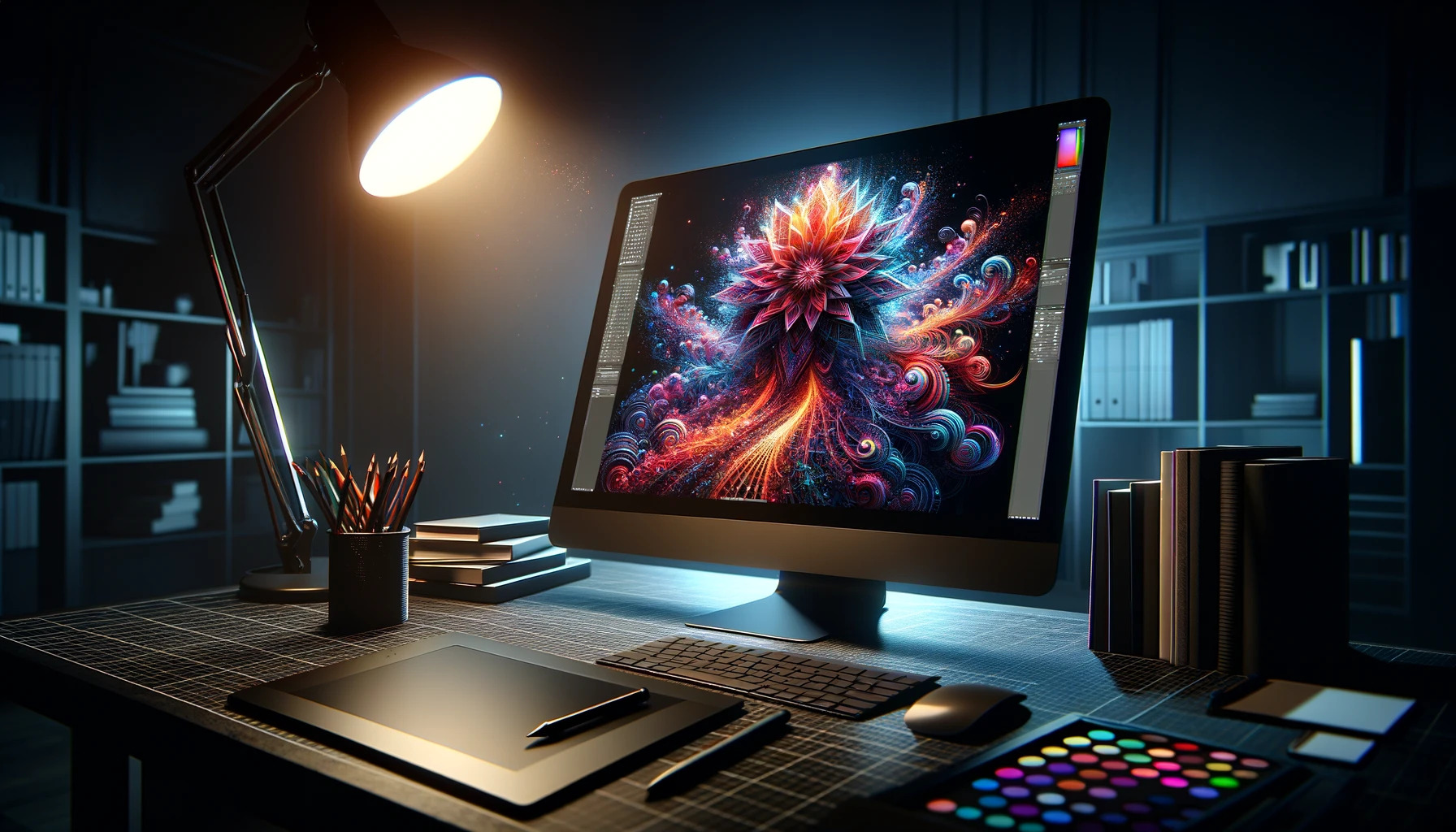Crafting 3D Art with SVG: Techniques and Tips
By Carlos
Published March 28, 2024
 Crafting 3D Art with SVG: Techniques and Tips
Crafting 3D Art with SVG: Techniques and Tips
3D art has revolutionized the digital landscape, offering depth and realism that flat designs cannot match. Scalable Vector Graphics (SVG) has emerged as a potent tool, blending scalability and flexibility with the aesthetic allure of three-dimensional imagery. This article delves into techniques and tips for crafting mesmerizing 3D art using SVG, aiming to equip you with the knowledge to transform flat vector shapes into dynamic 3D masterpieces.
Embracing the Z-Axis: The Gateway to 3D
Traditionally confined to the x and y axes, SVG takes on new life when we incorporate the z-axis, introducing depth to the equation. Achieving this involves a blend of SVG properties and CSS3 transformations, allowing for the simulation of three-dimensional space.
1. The Basics of 3D Transformation
- Rotate3d: Pivot your SVG elements around the x, y, or z-axis, adding a sense of rotation and depth.
- Translate3d: Move elements along the z-axis, pushing them closer or further away from the viewer.
- Scale3d: Resize elements in 3D space, enhancing the illusion of depth as objects grow or shrink.
2. Perspective
Applying a perspective CSS property to the SVG’s container influences how depth is perceived, making the 3D effect more pronounced and realistic.
Lighting and Shadows: Crafting Realism
The illusion of 3D in SVG art heavily relies on lighting and shadows, offering cues to the brain about an object's shape and depth.
1. Creating Shadows
- Drop Shadows: Utilize the
filter element to add drop shadows, giving the impression that objects are lifted off the page. - Gradient Shadows: Apply gradient fills to mimic ambient light effects, softening edges and adding volume.
2. Simulating Light Sources
- Radial and Linear Gradients: Represent light sources and their impact on objects, showing how light fades across surfaces.
- FeGaussianBlur: Soften shadows and light effects for a more natural appearance.
Gradient Magic: The Art of Illusion
Gradients are paramount in 3D art, offering a simple yet effective way to suggest form and light direction.
1. Linear and Radial Gradients
- Use gradients to indicate curvature and form, with colors transitioning from light to dark to simulate light hitting and wrapping around objects.
- Radial gradients can suggest rounded surfaces, enhancing the 3D effect.
2. Multi-stop Gradients
- Employ multi-stop gradients for complex surfaces, seamlessly blending multiple colors to mimic the nuances of light and shadow.
Combining Elements for Complex Shapes
Creating complex 3D shapes involves the strategic combination of simpler shapes, layered and transformed to build up the desired form.
1. Constructing with Basic Shapes
- Start with basic shapes like rectangles, circles, and polygons, then use transformations to align and stack them in 3D space.
2. Clipping and Masking
- Use
clipPath and mask to hide parts of shapes, refining edges and creating intricate details that contribute to the overall 3D effect.
Animation: Bringing 3D SVG to Life
Incorporating complex SVG animations infuses 3D SVG art with dynamic movement, significantly enhancing the realism and introducing engaging narrative elements that captivate viewers.
1. CSS Transitions and Animations
- Animate transformations to rotate, translate, and scale SVG elements, simulating motion in 3D space.
- Incorporate
@keyframes for complex, multi-stage animations.
2. JavaScript Interactivity
- Use JavaScript to react to user interactions, such as mouse movement or clicks, adjusting transformations in real-time for interactive 3D effects.
Performance Considerations
3D effects can be resource-intensive. Optimize performance by:
- Simplifying Paths: Use the least number of points necessary for shapes.
- Reusing Elements: Apply transformations to reuse elements in different contexts.
- Limiting Animations: Reduce the number of simultaneous animations.
Tools and Resources
Leverage SVG editing tools and libraries to streamline the creation process:
- Vector Graphics Editors: Software like Adobe Illustrator or Inkscape for designing and exporting SVGs.
- SVG Animation Libraries: GreenSock Animation Platform (GSAP) for complex animations and interactions.
- Online Tutorials and Courses: Platforms like CodePen and CSS-Tricks offer invaluable resources for learning and inspiration.
Conclusion
Incorporating animation imbues 3D SVG art with dynamism, harnessing movement to not only bolster realism but also weave captivating narratives. This progression towards more sophisticated creations is emblematic of the power held by advanced SVG techniques. These methodologies, especially when applied to crafting interactive SVGs, unlock an expansive field of potential, allowing artists and designers to forge experiences that are not just visually stunning but also richly engaging. Through the adept application of these advanced techniques and the integration of interactivity, the frontier of SVG art is ceaselessly expanded, heralding a new era of digital creativity.